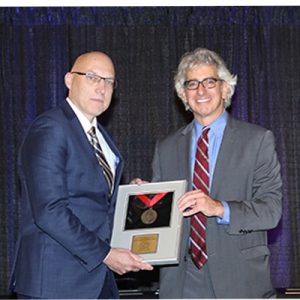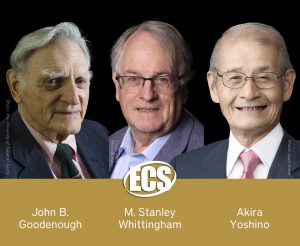 The Electrochemical Society honors 2019 Nobel Chemistry Prize laureates, John B. Goodenough, M. Stanley Whittingham, and Akira Yoshino, by the launch of a new collection highlighting their scientific contributions published by ECS. In addition, ECS recognizes their contributions in the winter 2019 issue of Interface, now available online.
The Electrochemical Society honors 2019 Nobel Chemistry Prize laureates, John B. Goodenough, M. Stanley Whittingham, and Akira Yoshino, by the launch of a new collection highlighting their scientific contributions published by ECS. In addition, ECS recognizes their contributions in the winter 2019 issue of Interface, now available online.
Goodenough, Whittingham, and Yoshino have been deeply involved with The Electrochemical Society—as members, authors, editors, fellows, meeting participants and organizers, awardees, and more. Their publications with ECS, to varying degrees, trace the history of the development of the Lithium-ion battery, the revolutionary invention for which they shared the 2019 Nobel Prize in Chemistry. (more…)
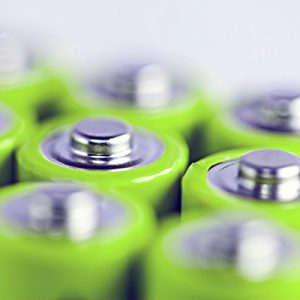 Batteries—they’re all around us, from everyday items like cellphones and laptops to life-saving medical devices and environmentally-friendly electric vehicles. So, who are the people behind the batteries that continue to impact and improve our daily lives?
Batteries—they’re all around us, from everyday items like cellphones and laptops to life-saving medical devices and environmentally-friendly electric vehicles. So, who are the people behind the batteries that continue to impact and improve our daily lives?

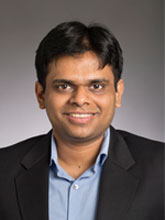 Online Battery Symposium Inspires Action
Online Battery Symposium Inspires Action
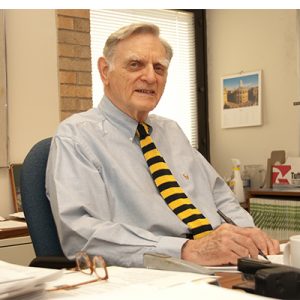
 The Electrochemical Society honors 2019 Nobel Chemistry Prize laureates, John B. Goodenough, M. Stanley Whittingham, and Akira Yoshino, by the launch of a
The Electrochemical Society honors 2019 Nobel Chemistry Prize laureates, John B. Goodenough, M. Stanley Whittingham, and Akira Yoshino, by the launch of a  John Goodenough, Stanley Whittingham, and Akira Yoshino
John Goodenough, Stanley Whittingham, and Akira Yoshino
 Join
Join 
